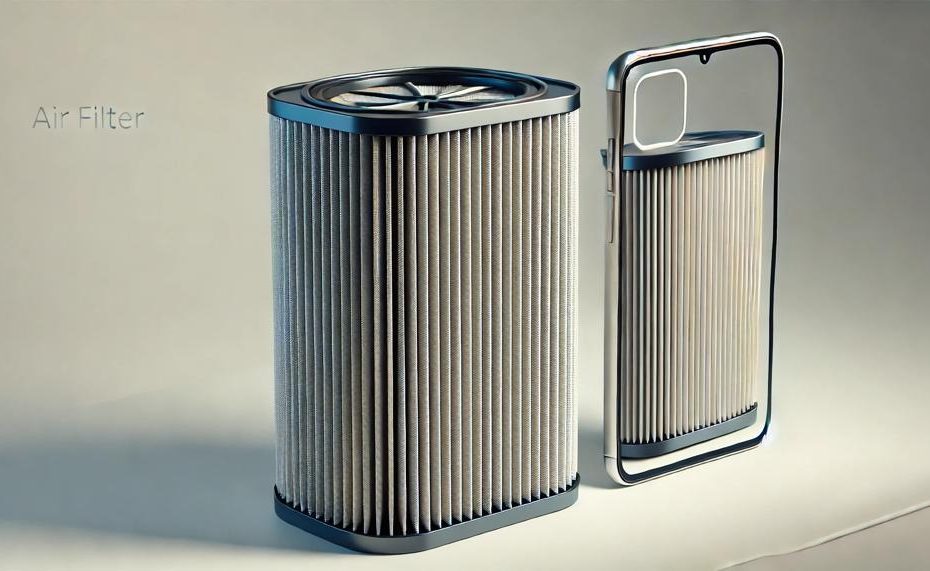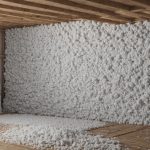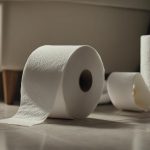Disposing of an air filter might not seem like a big deal, but it plays a crucial role in maintaining both the quality of your indoor air and the health of our environment. Air filters are the unsung heroes of our homes, trapping dust, allergens, and airborne particles to ensure we breathe cleaner air.
However, their job doesn’t end once they’re full – knowing how to properly dispose of these filters is just as important. Here’s a quick guide to help you navigate the disposal process smoothly and responsibly:
- Separate and Recycle: If possible, remove components like activated carbon and recycle them separately.
- Local Guidelines: Always check with your local recycling center for specific disposal rules for air filters.
- Manufacturer Programs: Some HVAC companies or filter manufacturers offer mail-in recycling programs.
- Safe Handling: Carefully remove the used filter, seal it in a plastic bag, and dispose of it according to your local waste management guidelines.
- Consider Reusables: Opt for washable HEPA filters to reduce waste and environmental impact.
By following these steps, you ensure that your air filter’s disposal is handled responsibly, contributing to better air quality in your home and a cleaner planet.
Contents
- 1 Quickly Place Your Old Air Filter in a Plastic Bag
- 2 Never Shake a Dirty Air Filter
- 3 Use Tape to Secure the Bag
- 4 Dispose of Old Air Filters in an Outdoor Trash Can
- 5 Never Leave Your HVAC System Without an Air Filter
- 6 Do You Need Help Replacing Your Air Filter?
- 7 Working Hard to be the best for 37 years and counting
- 8 Conclusion
Quickly Place Your Old Air Filter in a Plastic Bag
Placing your old air filter in a plastic bag before disposing of it is crucial for several reasons:
- Containment of Dust and Debris: Old air filters are laden with dust, allergens, and other airborne particles. Encasing them in a plastic bag prevents these contaminants from being released back into your home’s air, ensuring a cleaner environment.
- Health Protection: Air filters trap potentially harmful particles, including pollen, mold spores, and bacteria. Handling an old filter without a bag can expose you to these hazards. A plastic bag acts as a barrier, reducing direct contact and the risk of respiratory issues.
- Environmental Safety: Properly sealing your filter before disposal helps to prevent pollutants from entering landfills or recycling facilities uncontrolled. This practice aids in reducing environmental contamination and adhering to waste management protocols.
- Ease of Disposal: A plastic bag simplifies the disposal process. It keeps the filter compact and prevents any mess, making it more manageable to transport to recycling centers or waste bins.
Here’s a step-by-step guide and some additional tips for proper disposal:
| Step | Action | Details |
| 1 | Prepare | Have a plastic bag ready before removing the old filter. |
| 2 | Remove | Carefully take out the old air filter from your HVAC system. |
| 3 | Seal | Immediately place the filter into the plastic bag and seal it tightly. |
| 4 | Dispose | Follow local guidelines to either dispose of the bagged filter in the trash or take it to a recycling center. |
For more information on recycling and waste management, refer to trusted resources such as EPA’s Recycling Guidelines.

Never Shake a Dirty Air Filter
Never shake a dirty air filter before disposing of it because doing so can release harmful particles into the air. These particles include not only visible dirt but also microscopic contaminants like mold spores, bacteria, and viruses. When disturbed, these particles can become airborne, potentially causing health issues such as respiratory problems and allergic reactions.
Here’s a detailed explanation of why shaking a dirty air filter is a bad idea and what you should do instead:
Health Risks
- Mold Spores: Disturbing the filter can release mold spores, which can cause respiratory issues and allergic reactions.
- Bacteria and Viruses: These pathogens can become airborne, increasing the risk of infection.
- Microscopic Particles: Dust and other tiny particles can exacerbate asthma and other respiratory conditions.
Proper Disposal Steps
- Do Not Shake: Avoid shaking or banging the filter to prevent particles from becoming airborne.
- Use a Sealed Bag: Carefully place the filter into a sealed plastic bag immediately after removing it. This step is crucial to contain all particles.
- Seal Properly: Make sure the bag is tightly sealed to prevent any particles from escaping during disposal.
Environmental Considerations
- Containment: Properly sealing the filter helps to prevent environmental contamination.
- Safe Disposal: Follow local guidelines for disposing of air filters, which often recommend sealing them in plastic bags.
Use Tape to Secure the Bag
Use tape to securely dispose of an air filter by following these detailed steps:
Preparation:
- Wear Protective Gear: Before handling the air filter, ensure you’re wearing gloves and a mask to prevent inhalation of dust and other harmful particles.
- Choose the Right Tape: Opt for a strong adhesive tape such as duct tape or packing tape.
Sealing the Filter:
- Place the Filter in a Bag: Carefully place the used air filter into a large, heavy-duty plastic bag, preferably a sealable one. Make sure the filter is completely inside the bag without shaking it to avoid releasing particles.
- Seal the Bag: If the bag is not sealable, use the tape to close it tightly. Run the tape along the opening of the bag, ensuring no gaps are left where particles could escape. It’s essential to wrap the tape around the bag’s opening several times for a secure seal.
- Double Bagging: For added security, place the sealed bag inside another plastic bag and repeat the sealing process with tape. This double-layer protection helps ensure no contaminants escape.
Disposal:
- Mark the Bag: Clearly label the bag as containing a used air filter, using a permanent marker. This alerts sanitation workers to handle it with care.
- Dispose Properly: Follow your local waste disposal guidelines for hazardous materials. Some areas may require you to take the sealed bag to a specific disposal site rather than placing it in your regular trash.
Hygiene and Safety:
- Clean Up: Wash your hands thoroughly after disposing of the air filter and clean any surfaces that came into contact with the used filter.
Dispose of Old Air Filters in an Outdoor Trash Can
Yes, old air filters can be disposed of in a regular outdoor trash can. However, the disposal method depends on the type of air filter. Here’s a detailed breakdown:
| Type of Filter | Disposal Method | Notes |
| HEPA Filters | Regular Trash (if not recyclable) | Check with local recycling centers for acceptance. Remove metal grille and cardboard frame for home recycling. |
| Pleated Cotton or Fabric Filters | Reused or Regular Trash | These filters can often be reused, but if disposal is necessary, they go in regular trash. |
| Carbon Filters | Regular Trash | These filters are not recyclable and should be disposed of in the trash. |
| Aluminum Filters | Regular Trash | Examples include electrostatic filters used in HVAC units. Not recyclable. |
Never Leave Your HVAC System Without an Air Filter
The short answer is you should never leave your HVAC system without an air filter because it prevents damage, inefficiency, and higher costs. Let’s delve into the reasons:
- Protects Equipment: The primary function of an air filter is to safeguard your HVAC system from dust, hair, and other debris. Without it, these particles accumulate inside the system, leading to decreased performance and eventual breakdowns.
- Improves Performance: An unfiltered HVAC system struggles to maintain optimal performance. Dust and grime clog critical components like the blower and burners, causing the system to work harder and less efficiently.
- Reduces Energy Costs: A clogged or absent filter forces your system to expend more energy to push air through, increasing your energy bills. Regularly using and replacing air filters ensures your system runs efficiently and cost-effectively.
- Prevents System Strain: When the filter is missing, the airflow is unregulated, putting extra strain on the system. This can damage expensive components like the compressor and the blower, leading to costly repairs or replacements.
Do You Need Help Replacing Your Air Filter?
Properly disposing of an old air filter involves a few straightforward steps to ensure both safety and environmental responsibility.
Proper Disposal Steps:
- Turn Off Your System: Before removing the old air filter, ensure that your HVAC system is turned off to avoid circulating unfiltered air.
- Remove the Filter Carefully: Slide out the filter slowly to avoid dislodging trapped particles into the air.
- Seal in a Plastic Bag: Place the used air filter in a plastic bag and seal it tightly to prevent the release of dust and allergens. This step is crucial for maintaining indoor air quality.
- Check Local Recycling Options: Not all air filters can be recycled, but it’s worth checking with your local recycling center or municipality. Some centers may accept filters, especially if they are primarily made of cardboard and paper.
- Use Manufacturer Programs: Some companies provide mail-in recycling programs for used air filters. Check the manufacturer’s website or contact customer service for details.
- Dispose of in Trash If Necessary: If recycling is not an option, dispose of the sealed air filter in your regular trash. Ensure it is securely bagged to contain contaminants.
Environmentally-Friendly Options:
| Option | Description | Example/Link |
| Reusable Filters | Invest in air purifiers with reusable filters. These filters can be cleaned and reused multiple times, reducing waste. | Reusable Air Filters |
| Mail-in Recycling Programs | Some companies offer programs to recycle used air filters via mail. This is a convenient way to ensure filters are disposed of responsibly. | Filter Recycling Programs |
| Local Recycling Centers | Contact local recycling centers to see if they accept air filters. They might have specific guidelines for recycling these items. | Earth911 |
Working Hard to be the best for 37 years and counting
The company’s dedication to excellence for 37 years has significantly contributed to their success in finding the best ways to dispose of air filters. Here’s how:
| Aspect | Details |
| Knowledge and Experience | Accumulated over 37 years, leading to refined disposal methods. |
| Continuous Improvement | Ongoing innovation in disposal techniques for efficiency and eco-friendliness. |
| Collaborations | Partnerships with experts to stay updated on regulations and best practices. |
| Reputation | Renowned for reliability and responsibility, attracting like-minded partners. |
| Problem-Solving | Expertise in identifying and addressing disposal challenges effectively. |
| Customer Education | Providing resources and guidance for proper air filter disposal. |
| Environmental Impact | Promoting sustainability and reducing environmental harm through proper disposal practices. |
Conclusion
Disposing of an air filter properly is vital for maintaining air quality and protecting the environment. Air filters work tirelessly to capture dust, allergens, and airborne particles, ensuring cleaner air in our homes. However, their disposal requires careful consideration. Here’s a succinct guide to ensure you’re doing it right:
- Separate and Recycle: Remove and recycle components like activated carbon if possible.
- Follow Local Guidelines: Check with your local recycling center for specific disposal instructions for air filters.
- Manufacturer Programs: Some companies offer mail-in recycling programs, which can simplify the process.
- Safe Handling: Always handle used filters carefully. Seal them in a plastic bag to contain dust and allergens before disposing of them according to local waste management guidelines.
- Consider Reusables: Opting for washable HEPA filters can significantly reduce waste and environmental impact.
By following these steps, you not only ensure a cleaner home environment but also contribute to a healthier planet. Proper air filter disposal might seem like a small act, but it has a big impact on both indoor air quality and environmental sustainability.





